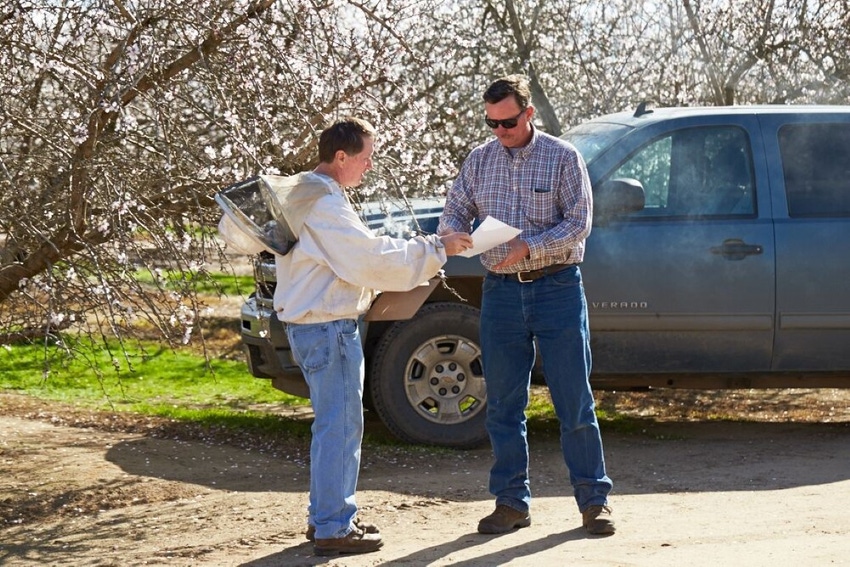
Almond grower, beekeeper communication fosters honey bee health
Communication is the first and most vital step to setting the stage for a successful season with a strong pollination of the almond crop and careful consideration of the health of visiting honey bee hives.Establishing a clear chain of communication in advance of each season can help ensure responsibilities are met and information is reported accurately.
November 1, 2016

The almond pollination season actually starts well ahead of the first bloom with the arrangements and agreements between growers, beekeepers, and pollination stakeholders along the communication chain.
Communication is the first and most vital step to setting the stage for a successful season with a strong pollination of the almond crop and careful consideration of the health of visiting honey bee hives.
Establishing a clear chain of communication in advance of each season can help ensure responsibilities are met and information is reported accurately. The chain starts with the direct link between grower and beekeeper-bee broker, and with others in the chain - farm managers, pest control advisers (PCAs), and pesticide applicators.
Agricultural commissioners also own a vital link in the communication chain since they retain information on hive locations within their county. All of these stakeholders have responsibilities in terms of maintaining honey bee health.
Pesticide plan
A key to successful pollination is that agreements are made ahead of bloom, and should include a pesticide plan that outlines which pest control materials may be used.
Aspects of this include: avoid applying insecticides, with the exception of Bacillus thuringiensis (Bt), during bloom until more is known about the impact on immature developing bee brood; and any fungicide applications deemed necessary during bloom should occur in the late afternoon or evening, when bees and pollen are not present.
The Almond Board of California has directed significant resources toward understanding the issues surrounding honey bee health and communicating to growers the steps to take to avoid contributing to hives losses.
It has published “Honey Bee Best Management Practices for California Almonds” and related quick guides that outline bee best management practices for growers. To access these vital documents, go to www.Almonds.com/BeeBMPs.
Over the last several years, Almond Board staff, in collaboration with the University of California, California Department of Pesticide Regulation, county agricultural commissioners, beekeepers, and other partners, have given more than 70 presentations on Bee BMPs to stakeholders along the bee communication chain.
Pesticide protection
Proactive communication throughout the communication chain, from applicators to growers to beekeepers, is especially essential for reducing risk to honey bees from unintended exposure to pesticides.
If treatment is deemed necessary, growers/PCAs/applicators should contact their beekeepers and county ag commissioners so that beekeepers with nearby managed hives are notified 48 hours in advance.
Beekeepers should register their hives with county agricultural commissioner offices and request notifications for pesticide applications.
Communication should also include details about hive removal timing, plus reporting to county ag commissioners should a suspected pesticide-related incident occur.
Western Farm Press Daily – free agricultural news delivered to your Inbox.
Declining hive losses
Recent downward trends in hive losses indicate that this outreach, increased communication, and resulting voluntary steps by growers, pest control advisers, and applicators to implement best management practices that go beyond label requirements for safeguarding against accidental pesticide exposure are working.
In fact, hive losses in 2015 dropped precipitously from the 2014 season. While early data shows that hive losses were sustained in 2016 with similar symptoms to 2014 losses, the numbers are still significantly less than the 2014 season.
The Almond Board will continue to work to get the word out on honey bee health and related best management practices through workshops, communication vehicles, and presentations at the annual Almond Conference, Dec. 6–8, in Sacramento, Calif.
You May Also Like



